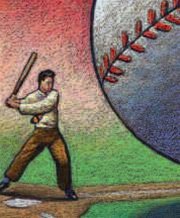 ≡
≡
Improve Your AE's Slugging Percentage
Dec 19, 2023 by Sean Luce A few weeks ago, David Winters, CEO of Badger Communications in San Francisco, sent me a book. I read approximately two books a week, and this one caught my attention once I read the first chapter. The book is Moneyball by Michael Lewis, and it takes a close look at the Oakland Athletics baseball team and its general manager, Billy Beane.
A few weeks ago, David Winters, CEO of Badger Communications in San Francisco, sent me a book. I read approximately two books a week, and this one caught my attention once I read the first chapter. The book is Moneyball by Michael Lewis, and it takes a close look at the Oakland Athletics baseball team and its general manager, Billy Beane.
The premise of the book is that the Oakland Athletics are always in the playoffs, yet they pay the least for their players. The A's went to three straight World Series, 1988-1990, and they had one of the highest payrolls in Major League Baseball. The last three years, they have had one of the lowest payrolls, yet they have gone to the playoffs each year.
Beane was a first-round draft choice by the New York Mets in 1980. He showed great potential, but in 1993, he hung up his cleats and
announced he wanted to be an "advance scout." Most MLB players wouldn't hang up their cleats to watch (scout) the upcoming opponent (research). Working his way up the ladder, however, Beane in 1997 was promoted to general manager of the A's. He assignment was to build a winning team when the owners wouldn't spend money - or at least the amount of money that the Yankees would spend. Beane and his staff designed new ways to scout players, finding the best in the least likely places. They found Jason Giambi and Barry Zito, who were not on any other MLB radar screens.
What's the correlation between baseball and sales? In baseball, theory has always relied on a player's batting average. Billy and his staff have thrown out this theory. They look at "on-base percentage" and a player's "slugging percentage," which then equates to "runs created." Simply put, "on-base percentage" means getting on base and "slugging percentage" is the number of bases divided by the number of at-bats.
Translation in sales: What's really important is the number of times the sales rep gets in front of the client (on base), asking for business, and getting higher average sales (slugging percentage). If your hits result in bigger dollars (more bases), then you can take fewer at-bats to achieve your desired sales quota. In other words, more asks get you more dollars.
Let's break it down even further. What gets a sales rep to the plate or in a position to do a first-call needs analysis? Research, on-location surveys, telephone prospecting etc. What gets a rep on base? A thorough customer needs analysis. What gets a rep around the bases to score? Superior closing presentations with long-term proposals and spec campaigns.
While much that we are taught - and have taught - says that the salesperson who closes the most deals is the most successful, consider whether the salesperson who makes 10 sales actually is better than the sales rep who makes five sales. The manager who asks, "How many sales did you make today?" could be in for a real shock when the rep with five sales at 15K bills more than the rep with 10 sales at 3K.
So, what must be managed if you follow the Billy Beane school for "runs created"? It's the number of asks-per-day times the dollar amount being requested, then factor in the rep's closing ratio: asks x $ - closing ratio. For a copy of my weekly recap tracker using the formula to ensure that reps are asking for the dollars that will achieve their desired sales quotas, e-mail me at sean@luceperformancegroup.com. Of course, the sales rep still has to hit the ball!
> Publications > Radio Ink




